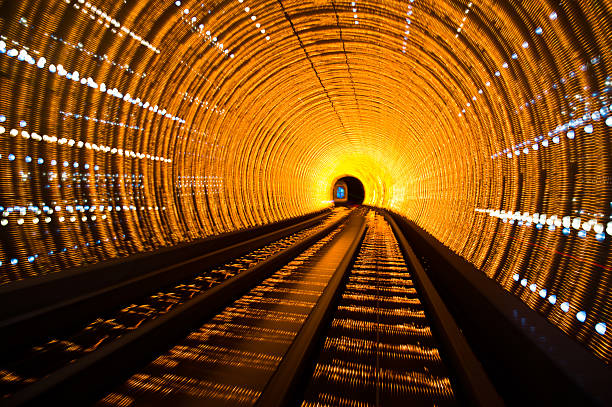From tomorrow (4 March), train passengers who travel regularly to Glasgow or Edinburgh on the West Coast Main Line (WCML) might notice slightly different scenery as they reach Lanarkshire. That change of view is expected to last until early June when the main phase of the £164M scheme to remodel Carstairs Junction is completed. After that the passengers will see the landscape go past much quicker. The work forms Scotland’s largest rail enhancement project and, when complete, will enable trains to pass through the junction almost three times faster than the current 64km/h line speed. YOU ARE HERE:THE FUTURE OF Digital tools have been used to manage the risk and plan Scotland’s largest rail enhancement project – now work is about to begin on site in earnest. From tomorrow (4 March), train passengers who travel regularly to Glasgow or Edinburgh on the West Coast Main Line (WCML) might notice slightly different scenery as they reach Lanarkshire. That change of view is expected to last until early June when the main phase of the £164M scheme to remodel Carstairs Junction is completed. After that the passengers will see the landscape go past much quicker. The work forms Scotland’s largest rail enhancement project and, when complete, will enable trains to pass through the junction almost three times faster than the current 64km/h line speed. In addition to the upgrade, the work includes construction of a new freight loop and the realignment of the island platform at Carstairs Station to improve local and freight services and ensure they no longer hold up longer distance passenger trains. The work is being delivered by Rail Systems Alliance Scotland, a partnership between Network Rail and major firms in the Scottish rail sector including Babcock and Arcadis.

The Alliance is a Framework for Delivering Renewals.
and enhancements, such as the Carstairs project, in the current five year rail spending period – control period 6 – and the next one – control period 7 – which runs from 2024 to 2029. The alliance’s focus is now very much on a blockade which runs from 4 March to 4 June. Enabling work for the blockade has been underway since January 2021. Taking a digital approach to design and planning work has allowed the project team to bring the best brains in the rail sector together. It has also enabled plans to be rigorously tested through scenario planning to reduce risk once work starts. While the faster line speed resulting from the project is a huge benefit, one of its main drivers is improved reliability. Two hundred services pass through Carstairs each day but the junction is old, complex and requires regular maintenance. Speed restrictions due to infrastructure issues are a frequent occurrence. Network Rail design project engineer John Clancy says: “This is the first major enhancement project at Carstairs since the junction was electrified in the 1970s and, although some upgrades were undertaken in the early 2000s, it is still essentially 1950s infrastructure.” To underline the importance of improving reliability, Clancy adds: “It is a primary route in the UK as it is where the WCML splits to go to Glasgow and Edinburgh.” Despite the obvious need to remove the bottleneck, the cost and impact of the work has meant it has been delayed until now “The condition of the asset is a major driver to make it fit for modern services,” explains Clancy. Adding predictability to the cost and impact of the work is where Arcadis’ use of digital tools for planning came in. According to Arcadis building information modelling manager for the alliance Chris Conroy, planning the work in this way has avoided the need for a much longer blockade. He adds that it also helped determine what work should be completed in the enabling phase to improve efficiency during the main construction phase.

Conroy’s Team Took the Lead From Network Rail’s.
use of Bentley Systems’ digital solutions and used a whole suite of Bentley software to resolve issues at the design stage. He says this enabled the alliance to bring together 101 experienced designers from eight firms spread across seven cities around the world. They were able to work remotely through Bentley’s common data environment to resolve the design challenges. When we were in the early stages, there were a number of options around the blockades and the digital design played a key part of the design,” he explains. One of the ideas for delivery involved 22 shorter blockades but we also considered longer blockades. “Federation of all the digital design models enabled us to resolve 13,000 clashes and plan the advance work at the design stage,” says Conroy. “Essentially it gave us greater confidence that we’d considered all the potential problems.” The scale of the Carstairs upgrade is huge. In total, Rail Systems Alliance Scotland will install 11.5km of new track, 4.5km of track drainage, 40km of new cabling, 30 new sets of points, 40 new signals and gantries, 25km of new overhead line electrification (OLE) cable and 191 new piles for the OLE. It will also carry out earthworks for the new station. The digital tools have created another benefit when it comes to communicating the complexity of each stage of the work. Conroy’s team is currently working on a virtual project flyover, which he says is helping stakeholders to visualise progress and help with safety briefings. Track renewal work and new OLE installation started on site last summer during weekend possessions. Closures over Christmas allowed for more of the preliminary work to be completed ahead of the upcoming blockade between 4 March and 30 May. The junction will not close for the entire blockade as work has been split into three phases so that some of it can reopen early. In the first stage the junction will be fully closed. But as the work moves to stage two, the south eastern part, which is the main construction focus of stage one, will reopen. This will allow services to Edinburgh to pass through with line speed restrictions. When the new freight loop is complete at the end of the second stage, the route to Glasgow will reopen, again with speed restrictions in place. The third phase focuses on the station platform realignment. For this, trains will run on the WCML from Monday to Friday but local services will remain suspended. The whole junction will close at weekends to allow the work to be completed. With the digital design complete, the technical aspects of the upcoming blockade are not a worry for Clancy, lthough logistics, having the right people to deliver the work and the potential for equipment breakdown are still a concern. “The design and digital models have been through peer review, so are as predictable as they can be,” he says. “Without the tools we could still do this project but it would have been a lot more challenging to integrate the different elements, manage the construction and eliminate clashes.”


Recent Comments